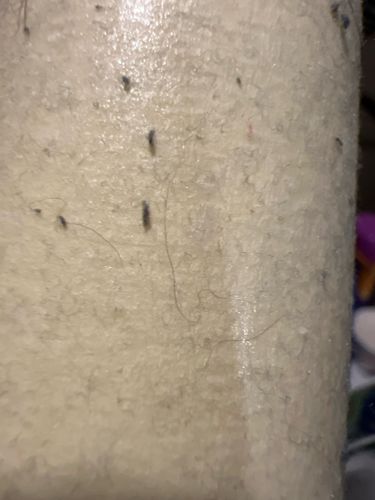Mold Mite (likely)
Scientific Name: Tyrophagus putrescentiae (a common species, though identification is difficult without microscopy)
Order & Family: Acari, Acaridae
Size: 0.3 - 0.5 mm (very small, typically barely visible to the naked eye)

Natural Habitat
Damp, humid environments with molds or fungi. Can be found in stored food products, homes (especially bathrooms, kitchens, basements), and agricultural settings.
Diet & Feeding
Primarily feeds on molds, fungi, and decaying organic matter. Can also infest and damage stored food products like grains, cheese, dried fruits, and pet food.
Behavior Patterns
These mites thrive in high humidity and are often indicators of moisture problems. They reproduce rapidly under favorable conditions, leading to large populations. They are typically slow-moving and can be found aggregated on surfaces where their food source is abundant.
Risks & Benefits
Potential risks include being a common allergen, triggering asthma and allergic reactions in sensitive individuals. They can also contaminate and spoil stored food products, leading to economic losses. They are not known to bite humans directly or transmit diseases. There are no significant benefits known for this species from a human perspective, though they play a role in decomposition in nature.
Identified on: 10/25/2025